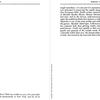1: David G. Roskies, Excerpt from the introduction to Joseph Opatoshu’s "Romance of a Horse Thief," 1986.
The introduction to David G. Roskies's translation of Romance of a Horse Thief discusses the role of the underworld in the novella and in Yiddish literature more broadly. It describes Opatoshu’s characters as “fleishig” (meaty) in contrast to “milchig” (milky) Jews, the most famous example of whom (although Roskies does not say so explicitly) is Sholem Aleichem’s Tevye the Dairyman. (n.b. We have chosen to use the English spelling of these terms; Roskies uses the Yiddish transliteration in his introduction.)
Suggested Activity: Have students read the excerpt from Roskies's introduction. If students are not already familiar with the Jewish distinction between meat and milk, it may be useful to provide background on traditional Jewish dietary laws.
Next, ask students to work together as a class to compile a list of character traits they would describe as “milchig” or “fleishig.” What attributes belong to each character type? If appropriate (especially if students have read other Jewish literature), you might ask the students whether other characters they have encountered previously might be described according to these categories (texts which would provide good background for this exercise include Tevye the Dairyman and God of Vengeance). Alternatively, you might also ask about “fleishig” characters that students have encountered in popular culture, such as Western movies. Why might an author such as Opatoshu be interested in writing about “fleishig” characters? Why might such characters be popular with readers?
Source: David G. Roskies, introduction to Romance of a Horse Thief, Joseph Opatoshu, trans. David G. Roskies, in A Shtetl and Other Yiddish Novellas, ed. Ruth R. Wisse (Detroit: Wayne State University Press, 1986), 144–145.

